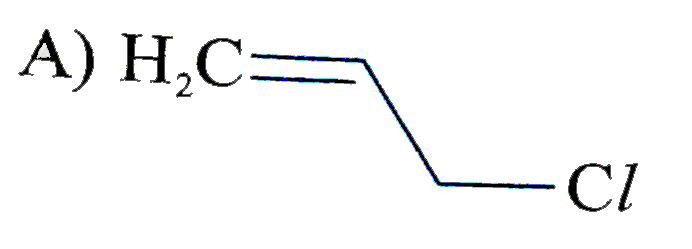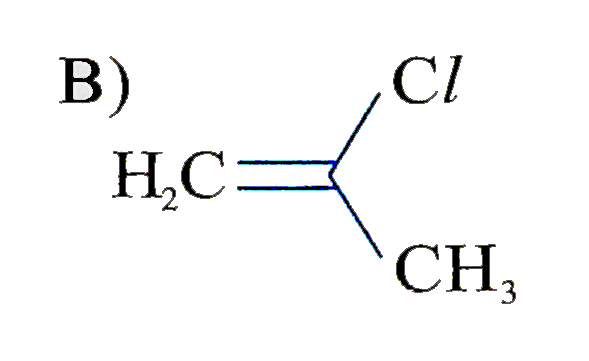Addition of HBr on, CH≡C−CH2−CH=CH2 and CH≡C−CH=CH2 separately given:
A
CH≡C−CH2−CHBr−CH3andCH2=C−C∣BrH=CH2
B
CH2=C∣Br−CH2−CHBr−CH3andCH2=−C∣BrH=CH2
C
CH≡C−CH2−CHBr−CH3andCH2≡C∣Br−CH−CH3
D
both 1 and 2
Video Solution
Text Solution
The correct Answer is:A
Conjugated diene is more stable
|
Topper's Solved these Questions
- HYDROCARBONS Book:NARAYNAChapter:HYDROCARBONS Exercise:EXERCISE - 2 (H.W) (PREPARATION & PROPERTIES)
Explore 5 Videos
- HYDROCARBONS Book:NARAYNAChapter:HYDROCARBONS Exercise:EXERCISE - 3
Explore 25 Videos
- HYDROCARBONS Book:NARAYNAChapter:HYDROCARBONS Exercise:EXERCISE - 2 (H.W) (ALKENES) (PREPARATIONS OF ALKENES)
Explore 2 Videos
- GENERAL ORGANIC CHEMISTRYBook:NARAYNAChapter:GENERAL ORGANIC CHEMISTRYExercise:Matrix-Match type questions
Explore 7 Videos
- HYDROGEN & ITS COMPOUCDSBook:NARAYNAChapter:HYDROGEN & ITS COMPOUCDSExercise:Interger type questions
Explore 10 Videos
Similar Questions
Knowledge Check
S-I: Addition of HBr to HC≡CCH2CH=CH2 give HC=CBrCH2CH=CH2
S-II: A triple bond is more reactive than a double.AS-I&II are correct, S-II is correct explanaion of S-IBS-I&II are correct, S-II is not correct explanation of S-ICS-I is true, but S-II is falseDS-I is false, but S-II is true.Addition of 1 equivalent of HCL to CH2=C=CH2 gives
A B
B C
C D
D
A : CH≡C−CH2−CH=CH2 adds up HBr to give CH≡C−CH2−C∣BrH−CH3 while CH=C∣Br−CH=CH2 adds up HBr to give CH2=C∣Br−CH=CH2
R : Double bond is always more reactive than triple bond towards electrophillic addition reaction.AIf both Assertion & Reason are true and the reason is the correct explanation of the assertion, then mark (1).BIf both Assertion & Reason are true but the reason is not the correct explanation of the assertion, then mark (2)Cif Assertion is true statement but Reason is false, then mark (3)DIf both Assertion and Reason are false statements, then mark (4)
The following reaction is a x,y-addition reaction.
H2C=CH−CH=CH2+HBr→H3C−CH=CH−CH2Br
The value of (x+y) is:
View SolutionCompare dipole moment of the following


CH3−CH2−C=CH,CH3−C=C−CH3
View SolutionIn the compound
CH2=CH−CH2−CH2−C≡CH the C2−C3 bond is of
View SolutionThe IUPAC name of OHCCH=CH−CH∣CH2CH2CH2CH3−CH=CH2 is
View SolutionWhich of the following is an alkene?
(i) CH3−CH=CH2
(ii) CH2=C=CH2
(iii) CH2=CH−CH=CH2
(iv) CH2=CH−(CH2)2−CH=CH2
View Solution

